Vacuum tubes are all the rage these days. Just like the resurgence in vinyl, new music lovers are finding themselves entranced by the sound (and glow) of tubes. I have to say I completely understand, since I too love their sound. For most new buyers though who aren’t ready to drop serious cash on today’s high-end brands, they often find themselves turning to cheaper options.
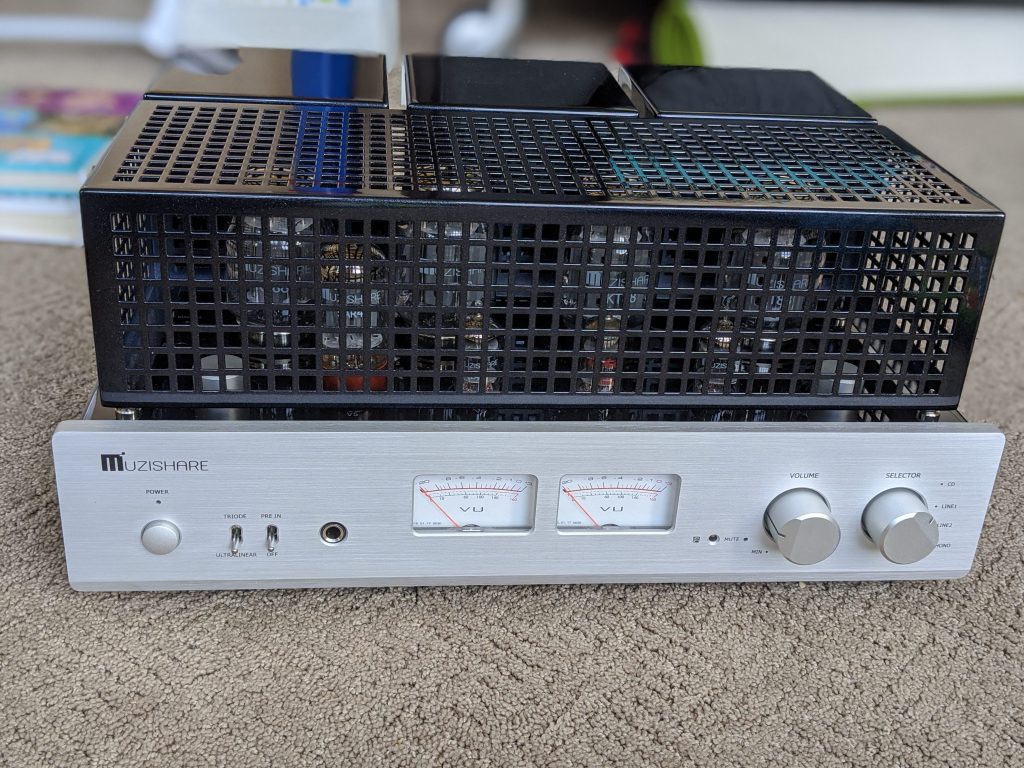
A few years ago, I would not have thought to myself “I should review a Chinese made tube amplifier”. It’s not that I think it’s impossible for high-end equipment to be made there, but more along the lines that it’s hard for the average shopping to distinguish from the mediocre and worthy.
Through all of those products though, one brand has seemingly risen to popularity – Muzishare. They make a variety of tube amplifiers and speakers, with the X7 solidly placed in the middle of its lineup. At roughly $1250, it has been lauded for great build and sound quality alike.
At the time of this review, I’ve spent a bit with the Muzishare now and I’m ready to share my thoughts. In short, it’s easy to see what everyone loves but let’s get cracking and start digging into the details.
Basic Specifications
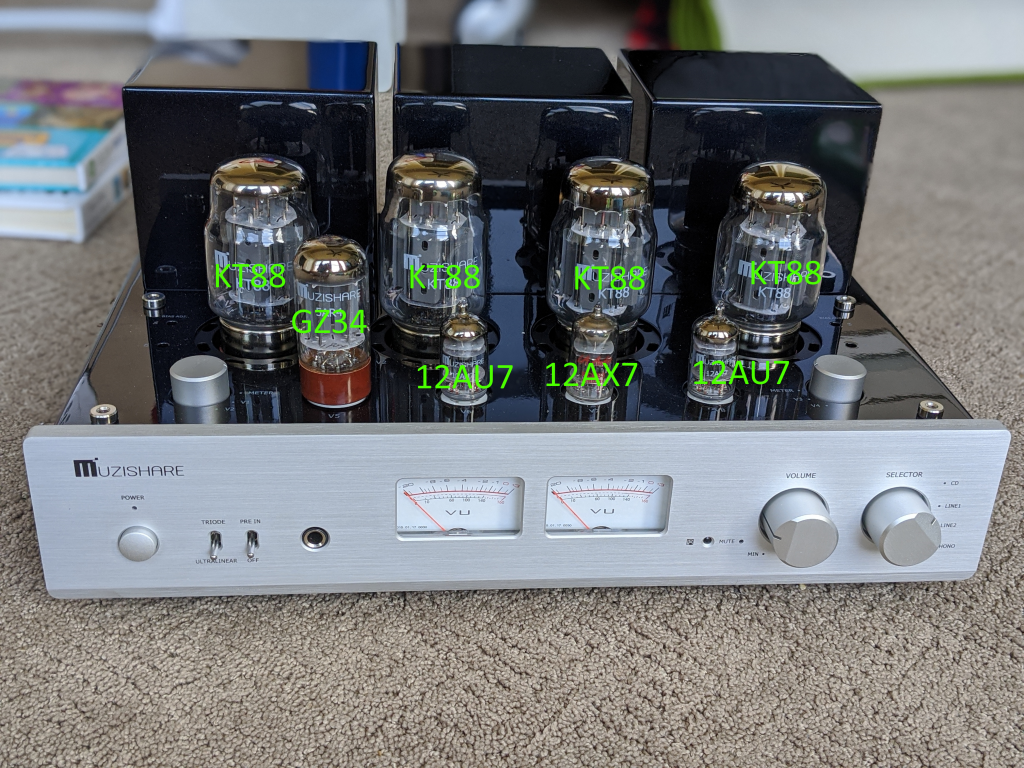
Some quick notes about the specifications of the X7. Its tube complement includes one GZ34 for rectification, a single 12AX7 for input and two 12AU7’s on phase splitting and driving duty. In the power section, there are four KT88’s running in push-pull.
On the front, from left-to-right, there’s the power button, toggles for Triode/Ultralinear and for using the pre-in input, two VU meters (one for each channel) channel, and finally, the volume and input selection pots.
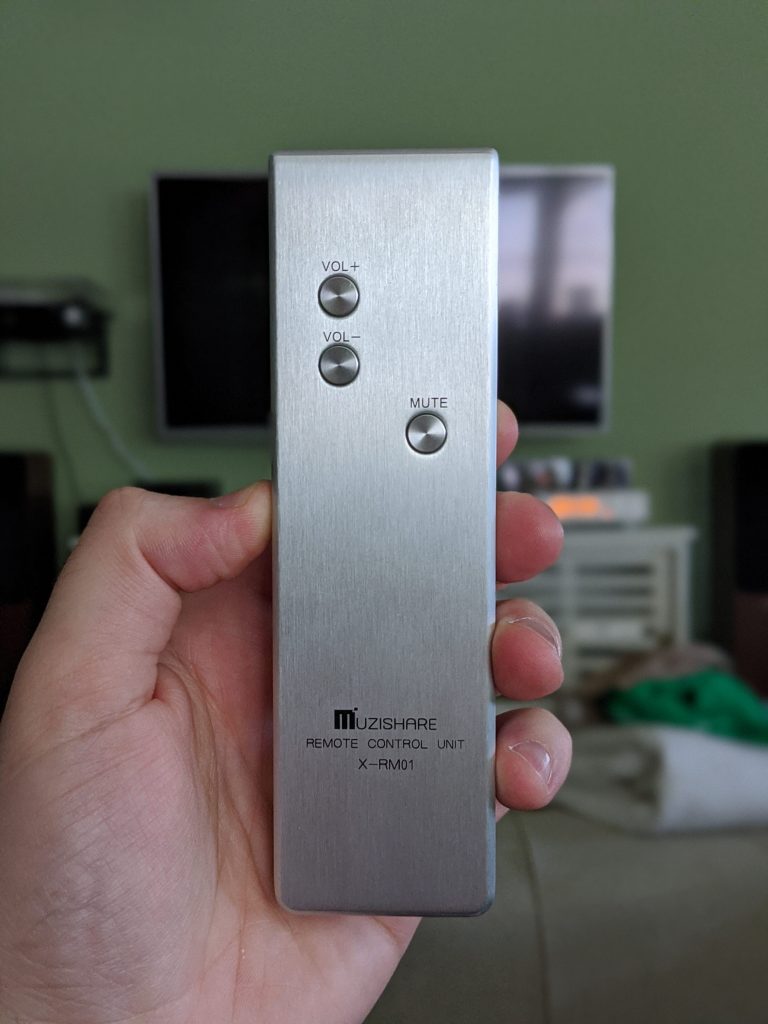
A quick note about the toggle for modes of operation. This unit is specified at 25W for Triode and 45W for Ultra-Linear with 1% THD. I’ll note that the 1% is probably at a lower wattage, not the max. It’s not specified in any documentation, but it’s a safe assumption to make.
The remote control is simple, providing functions for changing the volume and muting the output. That’s it. Pretty simple, but I don’t mind not being able to change inputs as that’s more likely to stay put once selected. It appears to be made out of aluminum and has a nice feel to it. I definitely didn’t expect this given the price.
There’s also a headphone output, but I didn’t get to test it. I imagine most people won’t be using it.
Inside The Chassis
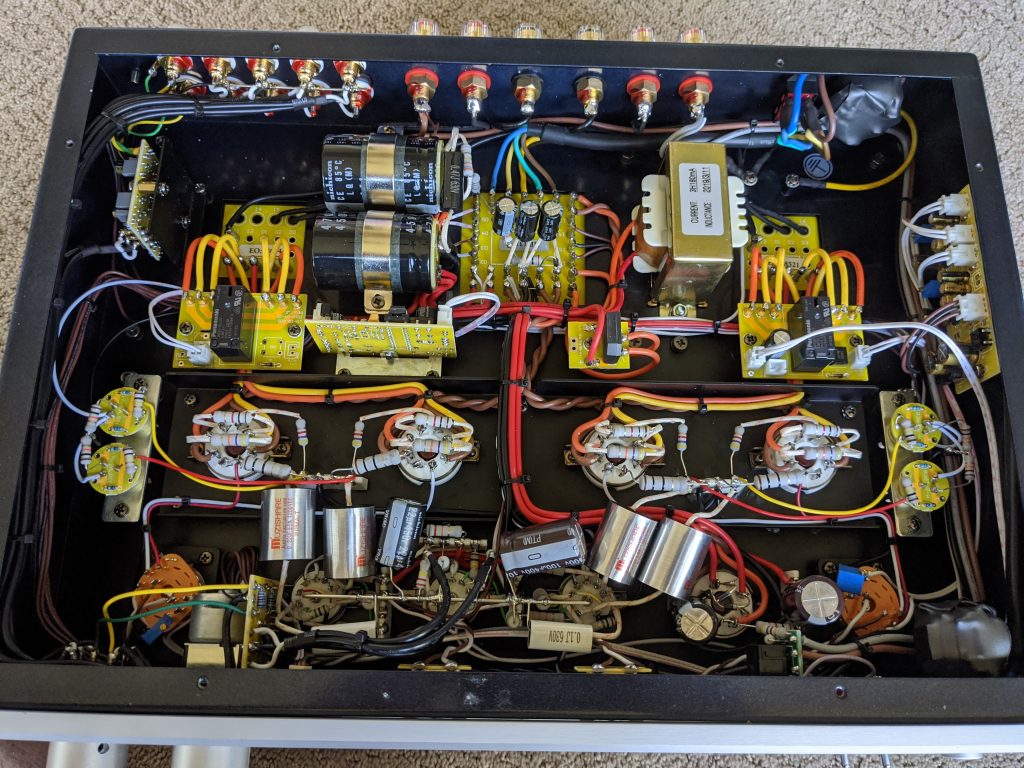
Taking a peek inside the chassis reveals some interesting things. First, it’s very apparent that the quality of work is high. Everything is neatly laid out with a combination of point-to-point wiring and printed circuit boards. The solder joints appear to be well done.
Did you know that there looks to be two forms of rectifications? The GZ34 looks like it’s only being used for the front-end while solid-state rectification is being used for the power tubes. Some quick googling seems to confirm this. If that’s the case, I think it’s pretty brilliant to be honest. I’ve long held that, for big high voltage power tubes, solid state is the way to go since it’s less prone to noise and problems. For the front-end though, a gz34 is about as quiet as it gets

Overall, the inside of the amplifier really makes you wonder if this was really available for only a grand. The workmanship and quality is on par with other tube amps costing 2-3x as much. Time to closer her back up and talk about how she sounds.
A quick note – I’ve seen rumors that Muzishare amplifiers are made in the same factory as Line Magnetic of Europe. I’m not sure if this is true, but it would definitely explain the excellent build quality as LM is very much loved across the globe.
On the back, we have four inputs. One is a Moving Magnet phono stage which I didn’t get to test. In addition, the Pre-In input is labeled to give extra indication that this input bypasses the volume attenuator.
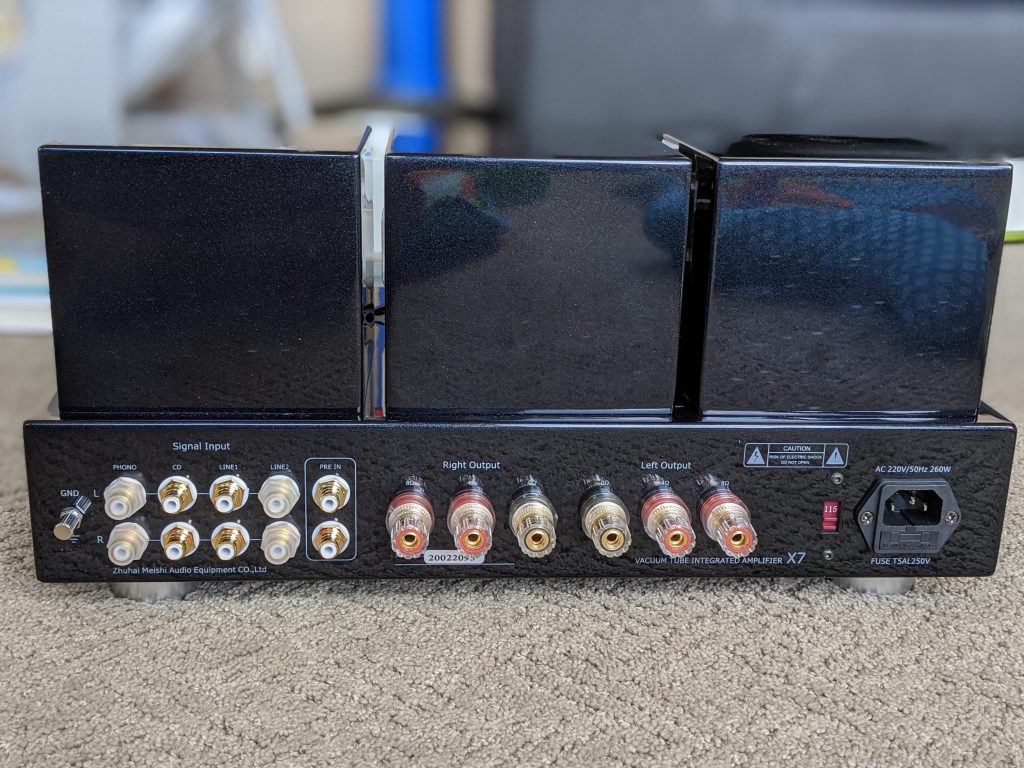
On the binding post side of things, we see the negative in black with the option for 8 ohm and 4 ohm output in red. Care should be taken here to make sure you are plugging your speaker cables into the correct binding posts.
In my case, I used the 8 ohm binding posts despite my speakers being rated for a nominal 6 ohms. I think it sounds better, but this can vary from person to person… or even among output transformers.
Finally, we have the input voltage selection (115 vs 230) and power receptacle. Looking at the transformers, the middle one is the power transformer while the outer two are output transformers. As such, you can expect the center casing to get much hotter unless you’re driving your speakers to a loud volume for long sessions.
About the System
For this review, I listened to digital exclusively. As such, I was unable to determine the quality of phono stage within the X7. On the digital side though, I am streaming to a raspberry pi via Roon (review coming soon). That is feeding my trusty Audial S4 D/A Converter.
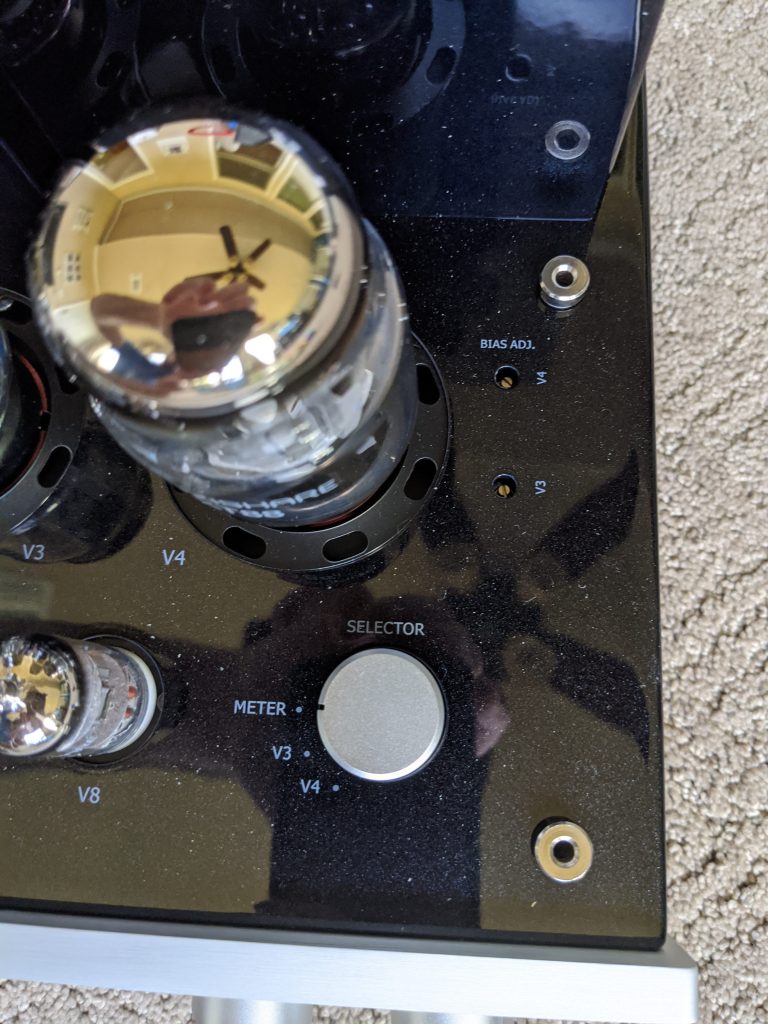
On the speaker side, I tested with two sets of speakers. For most of the review, I used the Q Acoustics 3050i floorstanding speakers. Even though they’re not on the level of my reference speakers, they are still transparent enough to fairly judge equipment.
I’d like to note that before I started my critical listening, I changed all of the tubes in the amp to ones that I’m familiar with. The rectifier was replaced with a Mullard Reissue GZ34. In the preamp section was replaced with a NOS Tungsram 12AX7 and two GE Five-Star 5814A’s. On the power side, I am using Gold Lion reissue KT88’s. While not the most “expensive” set of NOS tubes, they sound wonderful for the price and play really well with eachother. There’s even more low-end extension than with the stock tubes and the mid-range is even fuller (making female voices stand out in particular).
After installing the new tubes, you are required to re-bias the tubes. I recommend waiting 5’ish minutes to let the tubes settled. The meters can be selected with the dials on the top of the chassis and bias adjusted using the screws on either side.
Alrighty, onto the part everyone’s been waiting for.
How Does It Sound?
I have to admit that I came into the review a little jaded. In these times, it seems weird to be reviewing a product made in China when there are supposedly better options to be had elsewhere. That’s the thing though, Muzishare has managed to combine expertise with build quality, something that is extraordinarily rare in the “Chi-Fi” landscape.

First up is a personal favorite from Andrew Bird. While not his most popular album, it’s one that stands out to me for its country-folk soundscapes that demand your utmost attention lest you miss the smallest detail.
The X7 (in triode mode) here did two things wonderfully. It shouldn’t come as a shock that Andrew’s voice was nigh lifelike. If I didn’t know I was listening to a recording, I would have swore that he was singing in the room with me. Some tracks were more convincing than others, but I’d chalk that up to recording and mastering.
My favorite tracks on the album are back to back. “Anoanimal” and “Natural Disaster”. Dancing from left to right, front to back, “Anoanimal” really tests an amplifier’s ability to track movements and its channel separation. I’m happy to report that the X7 was no slouch here. The only thing that disappointed was the drum beats. Where I was expecting them to really dig deep, they instead sounded like an afterthought. Well, that’s disappointing.
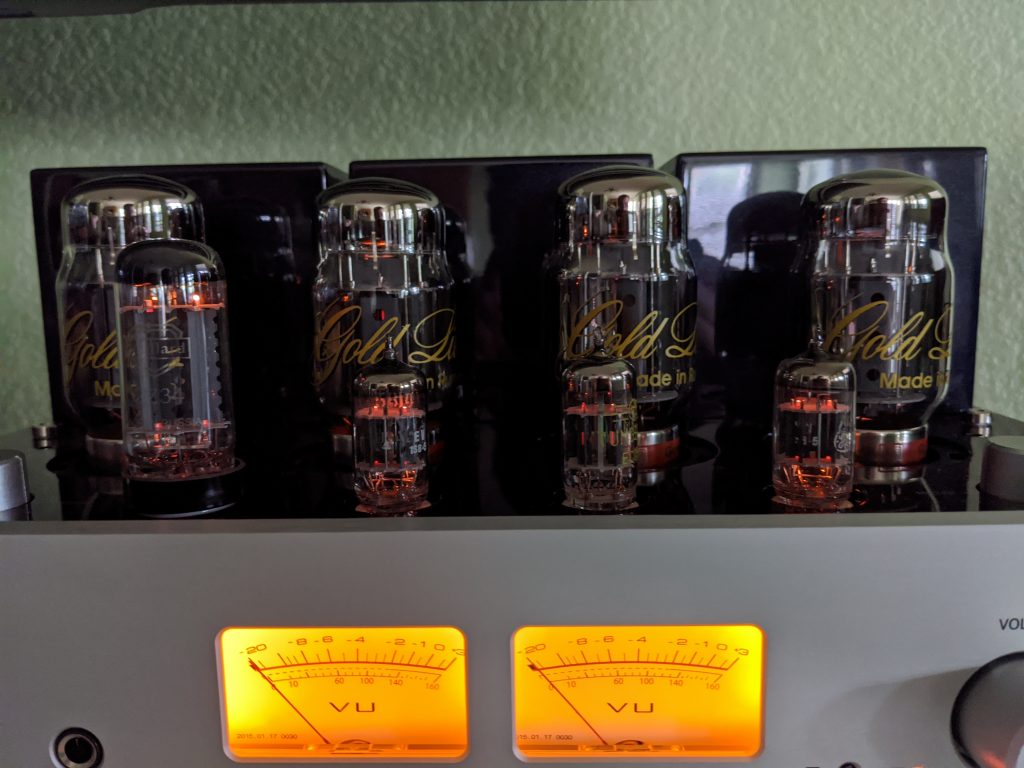
But don’t fret, switching the X7 to Ultra-Linear quickly resolved those problems. In return though, Andrew lost some of the sparkle in his voice. It now sounded like I was listening to a recording and not a live performance. I know the KT88 is capable of digging that deep in triode, so I can only assume that the output transformers on the X7 weren’t up to the task.
Moving onto “Natural Disaster” (back in triode mode), you’re greeted with several instruments that have been placed throughout the soundstage. The X7 does a wonderful job of separation and presents all the instruments as they should, without drawing attention to any one thing. I like that a lot.
When Andrew’s voice comes in, he’s perfectly dead center. If he’s not, then either the speakers aren’t setup correctly or the amplifier is doing something wrong. Good job X7. The rest of this track is about pace and timing. In other words, does it make your foot tap?
Well, yes it did.

From here on out, I switched the X7 back to Ultra-Linear. The albums that I used are more high energy and overall I felt they responded better to Ultra-Linear with its increased extension in both directions.
First up is “Modern Vampires of the City” by Vampire Weekend. Possibly my favorite album from them, the energy in this album is hard to mistake and easy to spot if done incorrectly. The X7 still impresses. It never misses a beat and sounds great in the process.
Some are probably wondering what “sounds great” means. It’s just that. It sounds like a proper tube amp. It extends deep (enough) in both directions, has good bass impact, and delivers vocals with a wonderful emphasis that is just right. I say deep enough because there’s a lower mid-bass bump present that makes the X7 feel like it goes lower than it actually does. It’s very slight, but the trained ear will pick up on it. In addition, this isn’t a bad thing though as I think most people will enjoy the added energy.

Next is Leon Bridges. I’m only going to review a single track, a live rendition of Beyond with Luke Combs. If you haven’t heard it, I highly recommend.
Despite typically being the type of music I’d recommend Triode mode for, I felt that Ultra-Linear was more appropriate here. I think that speaks to how nice it is having a switch that you can flip on a whim. Here, the X7 really showed its ability to keep up with multiple voices and the energy from the rest of the band. In particular, I was quite happy with the bass guitar and drums. While not going particularly deep, the X7 didn’t miss a beat and really delivered that live performance feel.
My Thoughts on Triode vs Ultra-Linear
I thought I’d make some quick notes on the differences I heard switching between triode and ultra-linear. These thoughts are pretty common with the general consensus, but I thought it prudent to specifically mention them.

On the right is a handy-dandy frequency response graph I came up with. It’s not 100% accurate, only meant to get a point across.
In triode mode, the low-end and high-end is tapered off while the mid-bass to mid-range is embellished. By that, I simply mean it’s elevated. In my opinion, this sounds great with Jazz, Live/Acoustic music, and small orchestras.
In addition to the rolled off ends, I tend to find triode a little less detailed. Notes are more rounded off and contributes to what people call “tube bloom”. It does wonderful things for vocals which is part of the reason I prefer triode for the genres listed above.
In Comparison, Ultra-Linear (UL for short) is great for up-beat music or anything that needs to be flatter across the entire spectrum. Because of the increased power output, I feel that UL amps do a better job of controlling the low-end. UL is also more detailed, allowing you to peer deeper into music that has a lot of moving parts. It’s not that triode can’t, but it’s much harder to do in comparison to UL (in my opinion).
UL is still capable of imparting tube magic, but critics will say that it’s not as “pure”. What that means varies from tube to tube. The difference is unmistakable.
Minor Annoyances
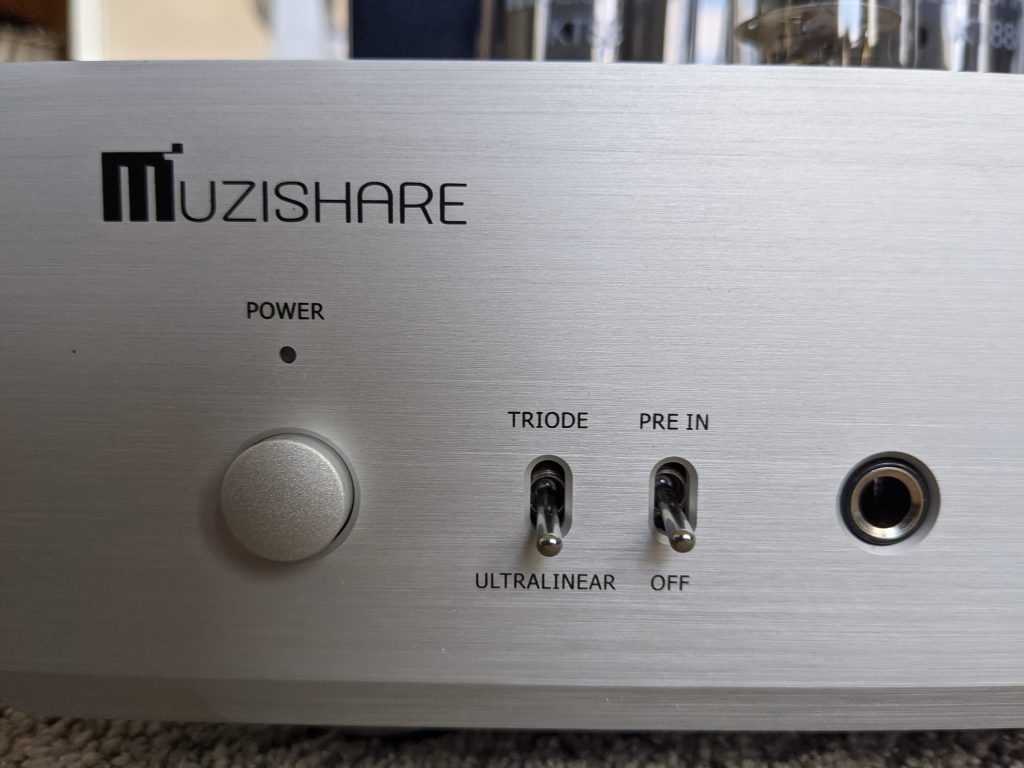
I thought I’d add a section on minor annoyances I had with the X7. These didn’t change my enjoyment while listening to music, but I thought I’d note them in case anyone was wondering.
First, when changing output modes (Triode vs Ultra-Linear) while the amplifier is on, you can expect a clicking sound. My advice is to make sure no music is playing and that the volume be turned down a little before making the change.
Second, the X7 clicks when turning it off while in Ultra-Linear. This doesn’t happen in Triode. Finally, there is a click when changing the “pre-in” switch from on to off or vice-versa.
In Conclusion
Sometimes I forget that I’m reviewing something that tips the scales just over a grand. The fit and finish definitely feel more like something twice its price. That weight goes a long ways when considering to buy a tube amplifier, since it’s the transformers that ultimately decide how good the amplifier is (and it’s where a vast majority of the weight comes from).
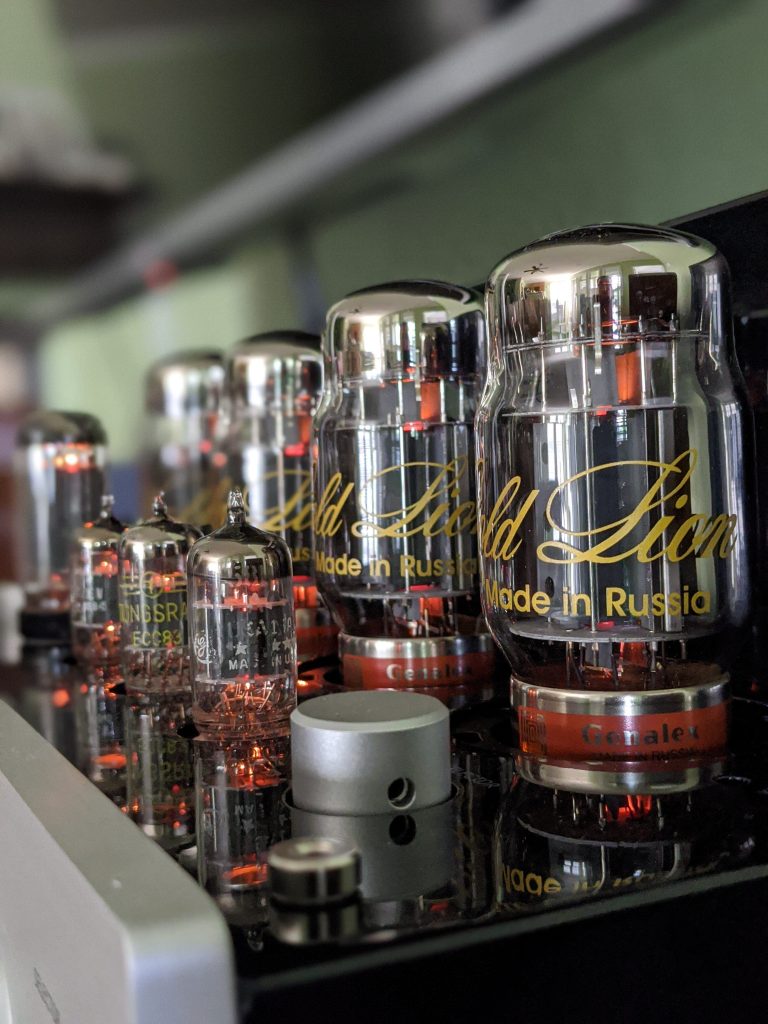
Overall, I really enjoyed the ability to switch between the Triode and Ultra-Linear modes of operation. It speaks to the versatility of the X7 and why you should consider it.
In a few short words, I would say Triode mode is softer by rounding out notes and thus presenting a very “rosey” picture. It invites you to sit down with a beverage of your choice and just be at home with the music. This mode excels at Acoustical performances and small Jazz/Orchestral ensembles.
With Ultra-Linear, you have an entirely different beast. It controls the low-end well and is sharp enough to get every single note right from a fast moving piece of music, whether it be rock, pop, or large orchestras. It never failed to impress with its scale.
With all that said, there were a few hiccups. With massively complex music (like orchestral), sometimes smaller instruments and parts got mixed up. If you’re looking for a tube amp to play your Berlin Symphonic music, I wouldn’t go straight for the X7. Will it do? Sure. Is there better? Maybe.
In addition, I wish the reach in either direction (bass and highs) was a little better in Ultra-Linear. Don’t get me wrong, it will be fine for the vast majority of people, I just found it a little disappointing in the extreme situations. For most music listening, either I didn’t notice or it didn’t bother me.
In the end, the X7 is a winner in my books. If you’re looking for a serious contender in the vacuum tube game that will be hard to beat without spending 2-3x the amount, then it should be on your shortlist.
Cheers!

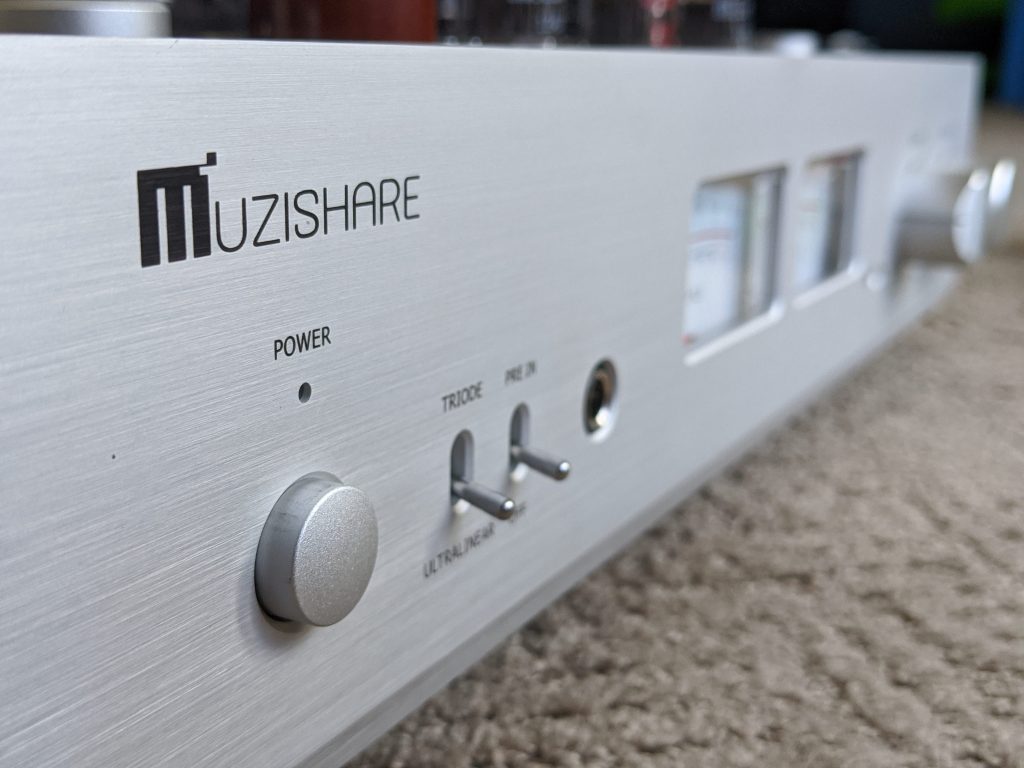
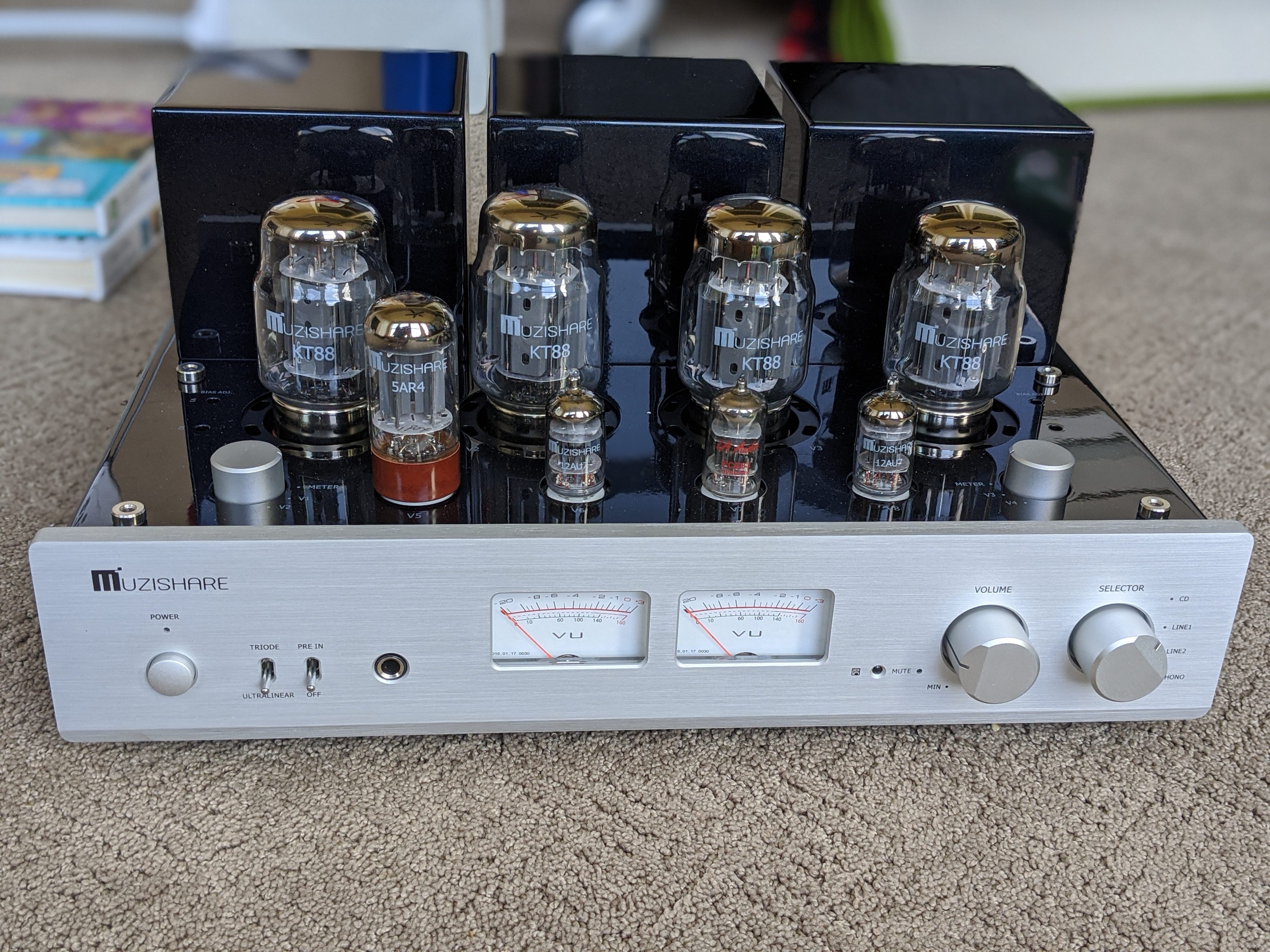
Thank you for the informative review. Although I would have liked your opinion on the sound quality as the unit comes, with the original tubes.
After the review we still don’t really know how it sounds out of the box ..
I ordered mine today and am very much looking forward to my first tube experience.
Thank you
Hey Andrew,
That’s a very fair point, and one that I should have given more consideration in my review. In short, the biggest change from the stock power tubes was additional extension on the low-end, especially in ultra-linear mode. That’s not to say the stock tubes didn’t dig deep, but they started to roll off sooner compared to the Gold Lions… I would say 40Hz instead of 30Hz for the Gold Lions. Those are definitely the tubes I would change first whenever it comes time.
As far as the preamp tubes are concerned, the difference wasn’t as pronounced. I believe the stock tubes to be rebranded JJ’s (though don’t hold me accountable for that), which are perfectly fine in their own right. They dig plenty deep in both directions and are relatively neutral. I tend to prefer a warmer sound (even in Ultra-Linear mode) from my tube amps, so the switch to NOS tubes was to tilt the sound ever so slightly in that direction for me.
The rectifier… I can’t say if it made a difference. I’ve heard differences in other amps, but it didn’t seem to matter as much in the Muzishare.
Hope that helps. Thanks.
I’ve been living with the X7 for a little over a month now, and enjoying it immensely running the valves it came with. I tried it for a day as an integrated amp, and found that it had a fairly neutral sound. Not in any way bad, just neutral. I’m an old school audiophile who began my journey when many sound reproducing pieces of equipment still relied on tubes to do their thing. That means I don’t much care for neutral! I need tone controls, so my X7 is being moderated through the pre amp stage of my Vincent SV-237MK. It’s a very good combo for my Cornwall lll’s. My particular X7 was sending an annoying pop to my speakers on power off only, and no switch combination seemed to make a difference. I had a Niles SPK-1 speaker switch that was used in a previous set up, so I dug it back out. It’s perfect for this pairing since it requires a 12 vdc switching signal, and the Vincent conveniently provides one on the back panel. I use a “last on, last off” sequence with the X7 to ensure that it is not powered up without a speaker load present.
As for the stigmatism of being made in China, I think it’s only fair to point out that regardless of where modern tube amps are manufactured, if they are shipped with modern valves, they ALL are using valves made in either China or Russia. The basic design theory governing tube amplifiers has been around for a long time. As long as modern manufacturers are using sound building techniques and good quality electronic components, as Muzishare seems to be doing, I saw no reason not to give this one a try. I did hedge my bet by purchasing mine through Amazon so as to have a guaranteed hassle free return option. Happly, it was not necessary.
Hey,
I’m glad you’re enjoying yours as much as I did mine (while I had it). I would not be surprised if it ended up in my system sooner or later again. And I’m pretty sure my son enjoyed it even more than I did.
Regarding the neutrality of the amp, I understand where you’re coming from. I think some NOS mullards could help you there, but maybe not to the extent you’re wanting. I actually have a pair of EL84 monoblocks that I only get to bring out during he winters due to the heat they put out. I’m hoping to have a review out on them sometime in the next few months.
Cheers
Hello and thank you for this exhaustive review of the Muzishare 7 … may I ask you if you had a chance to try it. How is it to compare with the Willsenton R8 ?
I would also love to see a head-to-head of this and the Willsenton R8!
Dear everyone
At the beginning of this year I bought a Muzishare x7.
This tube amp is placed between a denafrips Ares 2 dac and a set of sonus faber 2 speaker, I must say that after playing the tubes well this sounds great.
I also tried some genalex gold lion these had a bit more power in the low end and a bit more warmth in the whole width. It is certainly a good device for the beginner to hear what a tube amp can produce for great sound.
But this is also a wonderful device to listen to for the more advanced audiophile.
For this price, the quality is more than good, the appearance also deserves a big plus, all in all, a great device.
Greetings M
I took some time to consider your review. I too own an X7. It has the stock tubes it came with. Dead silent noise floor and great presentation in the highs, mids and bass. I did connect an active 10″ sub via its speaker line high-level connections. (this allows proper time alignment and does not change the amp ouput load in any way) I connected a Cambridge AXC35 CD player to it. Speakers are Taga Harmony towers. A very low cost system all in all. I used reasonably priced (large stranded) cables. I got a spectacular sounding system with full body, holographic center, great sound stage and silky smooth mids and highs. This amp provided a transparent and rich output without any change from the factory tubes. The bias was also dead nuts on out of the box. 5 stars for power, build and price. If you are not looking for a huge watt tube amp, I can comfortably recommend it. Welcome to Thailand any time!
I got my x7 about a year ago and really like the quality and sound. I have a pair of Paradigm Monitor 7v2 speakers and mostly listen to high quality online streaming music using a JC Audio Bluetooth (12AU7 tube) decoder. Highly recommended!
Not so much that I could say: it’s just an incredible amplifier; a real bang for the buck!!! Love my X7 to the letter!!
I’ve had my X7 about three months now and I love it! It’s a shame the reviewer didn’t try the headphone amp, it’s absolutely fantastic. I struggled to listen to vinyl through headphones on my last couple of amps (Marantz pm6005 and Cambridge Audio CXA60), but this is a real pleasure.
Tube rolling is fun and makes a real impact on sound. I currently have some Shuguang Treasure KT88s, a pair of British Mullard 12AU7 and a Brimar 12AX7. I’m trying to get an old Mullard for the rectifier, but they’re fairly expensive.
A well built and excellent sounding piece of kit.